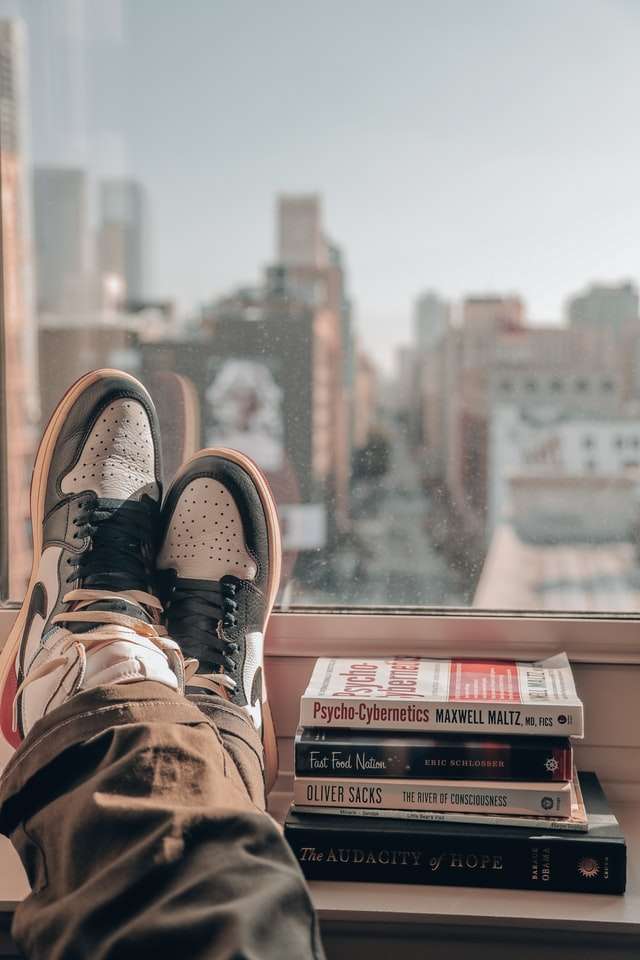You’ve probably come across this guide because you weigh more than 200 pounds/90 kilograms. The word “heavy,” however, is very subjective.
For example, we might be discussing a huge-framed runner with matching feet. Another possibility is that the patient’s shoes are too tight or that they have flat arches. Low or flattened arches may not always be mentioned, however many heavy runners possess a typical arch.
You might hear any of the following statements while looking for suitable running shoes: “For serious runners, use a running shoe with the softest cushioning possible. They’re ideal for heavy runners.” Alternatively, “A stability shoe is definitely the way to go if you overpronate.”
We understand why most people suggest wearing shoes with a maximum softness rating of 30 or less, as well as motion-control shoes. The underlying (and incorrect) logic is that a smoother ride implies greater shock absorption. That, however, is not the case; there is no scientific evidence to support this notion.
Top-rated running shoes for men who are heavy
All of the shoes listed below are made of high-quality materials and deliver outstanding performance. You must go through the list of top running shoes for big men and select those that match your requirements and expectations.
- Brooks Transcend 7 Men’s Brooks is a premium brand that sells shoes and apparel for men.
- The Mizuno Men’s Wave Rider 23 is a good-looking, well constructed running shoe built for speed and distance.
- The Brooks Beast 20 Shoes
- The Men’s Gel-Nimbus 22 is a neutral running shoe.
- The Saucony Men’s Ride 13 Shoes are a great choice for runners who want to make their distance more efficient.
When it comes to a high bodyweight, a running shoe that is excessively soft might do more harm than good. Here’s why:
If you’re looking for a place to start, we’ve got you covered.I’m your guy when it comes to putting together a killer running kit. I’m an advocate for getting you started with the best knowledge and gear possible. When it comes to jogging, purchasing the appropriate shoes will make a huge impact.
I’ve collected some great feedback from other bloggers and running sites, as well as a range of top-rated products. Furthermore, I’ve divided them into two categories: road running and trail running.
High bodyweight makes an ultra-soft running shoe difficult to run in.
A shoe that is designed to support a 150-pound runner might result in the heavier person being tossed about.
If the midsole isn’t adequate, it puts a greater strain on the body. During each stride cycle, the body must put in more effort to compensate for the unsteady shoe. Strains, sprains, and spasms are all more likely as a result of this.
Excessive midsole softness can cause the shoe to collapse.
In fact, during my experience with the Asics Nimbus 17, I discovered that it was a wonderful example of this. The midsole was so squishy that it bottomed out even when I weighed 150 pounds, and parts of the outsole were felt during runs.
A soft shoe will result in a significant variation between the static and dynamic heel drop.
For many runners, this figure is crucial when picking running shoes. However, the static heel drop should be regarded with caution. When a shoe is completely loaded, the actual heel offset can vary significantly from the static drop. A shoe with a rigid midsole keeps this variation low.
Running in a soft shoe will create a lower heel gradient than expected, especially when the foot-strike weight is in multiples of 200 lbs. A 10 mm drop might turn into a 4 mm offset when running depending on how soft the midsole is. If you’re not used to wearing low-heel running shoes, this might strain your Achilles or calf muscle.
The durability of super-soft cushioning is lower.
Except for adidas Boost, Saucony Pwrrun PB, or Nike ZoomX, EVA foam-based midsoles generally lose their cushioning after a few hundred miles. A runner wearing a shoe made of a soft EVA foam compound is more likely to wear it down quicker than one wearing a shoe constructed of a less-dense EVA foam compound.
However, there are exceptions. So far, we’ve cast a poor light on super-soft running shoes, but there are some exceptions. New-generation foams can create incredibly soft yet robust footwear, depending on the manufacturer.
The Norse invincibles are a very delicate pair of shoes, yet their ultra-wide PEBA midsole will outlast similar EVA foam components. However, the Invincible is best utilized for easy cruising. In a nutshell, heavy runners should find firm and sturdy running shoes to be more comfortable.
Traditional ‘stability’ shoes might have the reverse of their intended impact.
The inner midsole of a conventional stability shoe is firmer than the outer wall, providing greater support and strength. It also causes the midsole to shift inwards, which is a disadvantage. The body weight will tend to follow the path of least resistance, which means that it will lean laterally.
Not all “stability” shoes are the same. What’s available if the shoes are soft and laterally-leaning stability versions aren’t an option? Softness and cushioning are frequently confused.
There are a variety of cushioned and comfortable running shoes on the market, but it’s difficult to wade through the bewildering selection.
We’ve put together a list of over a dozen running shoes to help you narrow down your search. This buyer’s guide is by no means exhaustive, but it’s a decent place to start.
for more information, visit this website.

